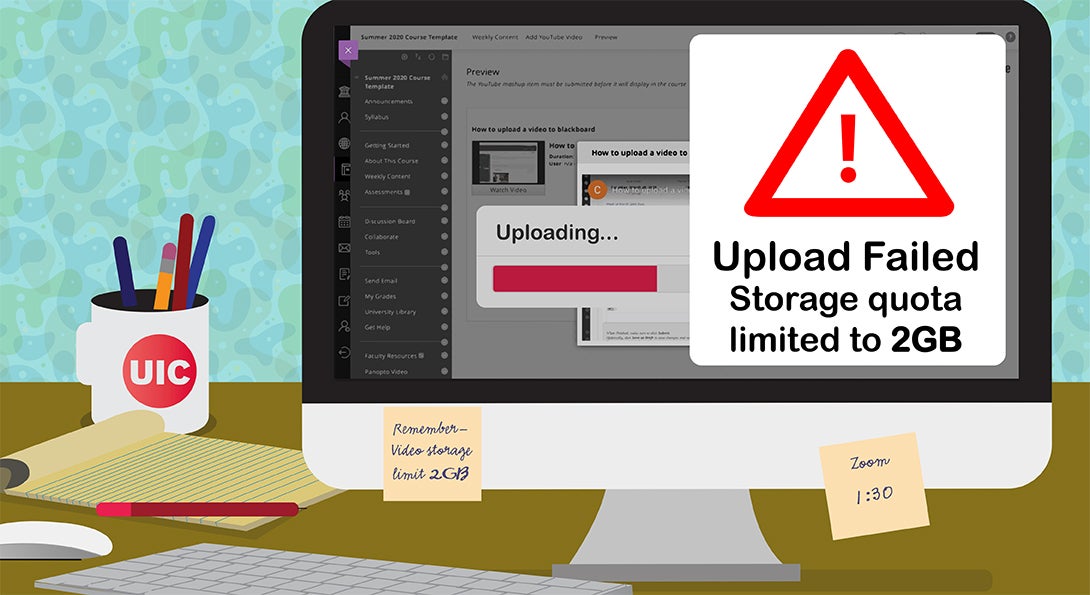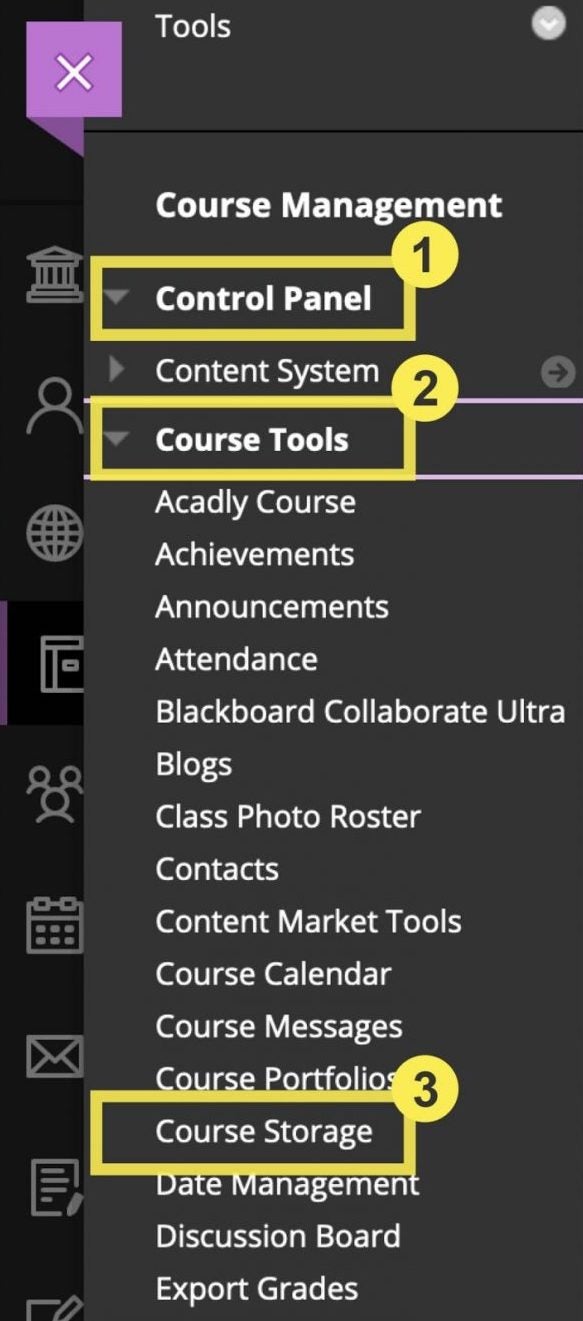Blackboard File Storage
Introduction
If you have reached the 2GB course storage limit, please contact the Learning Technology Solutions support office.
Avoid Uploading Large File Types

Instructors should avoid uploading the file types listed below directly into Blackboard courses.
- Audio (mp3, mp4, wav)
- Compressed files (zip, rar, tar.gz, bz2)
- Computer executables (iso, exe)
- Image (tif/tiff, bmp, jpg, xif, heif, psd, svg, eps)
- Interactive assets (swf, flv)
- Narrated or media-rich PowerPoint (ppt, pptx, pps, ppm, ppsx, key)
- Video (wmv, avi, mp4, m4v, mov)
Use Panopto or Echo360 for Video Content

It is recommended to use Panopto or Echo360 to create, edit and integrate video content to Blackboard courses.
- These tools enable instructors to add active learning activities, accessibility features and are optimized for streaming and mobile viewing.
- Both tools allow instructors to make videos public, private to only UIC students and instructors, or limited to only the students in a course.
- These platforms integrate with Zoom so recordings saved to the Zoom cloud can be easily uploaded to an instructor’s Panopto or Echo360 account.
Use Cloud Storage Services

It is best practice to use the flexibility and size capacity of UIC-managed cloud storage services to host large files.
- Instructors have access to cloud storage services, including Google Drive, Box and OneDrive.
- Files uploaded to cloud storage services can be linked to your Blackboard course instead of the file being directly uploaded to Blackboard. Files linked to your Blackboard course from a cloud service do not use storage quota.
- This will also not store copies of the same file every time you copy your Blackboard course, and you can modify files on your desktop computer by syncing them to the cloud storage tool of your choice.
Video File Do's & Don'ts
1
Don’t upload the video file directly in Blackboard, as you would with a word doc or pdf file.
Do upload videos to Panopto or Echo360 and embed or place a link in Blackboard in any content area so your students can access the video in the context of your instruction.
Don’t request students to upload video files as part of a Blackboard Assignment.
Do create an assignment that allows students to upload a video via Panopto in Blackboard. You can also use Echo360 or VoiceThread to handle video assignments while keeping those videos protected.
Don’t record an hour-long lecture.
Do scaffold students’ learning by recording short (5 minutes or less) video segments with a clear concept or topic and check for understanding. Checking mastery of a concept using non-graded quizzes is a great way to let students try. If you plan to reuse your videos, using Blackboard is the best solution because if you create quizzes in Panopto, you will need to relink the quiz manually each time you use the video.
2

Don’t forget to check videos for universal design and that they are formatted for accessibility. Reference the Accessible Teaching and Accommodations Guide
Do add closed-captioning to your videos.
Video Tutorials
How to Check Course Storage in Original Course View

To check the storage quota of your course, on the Blackboard course menu:
- Go to the Course Control Panel
- Select Course Tools
- Select Course Storage
Total course storage will be displayed as the sum of two file types:
- Course Files (video, document, and other files uploaded to the course)
- Legacy Files (content from earlier versions of Blackboard)
How to Check Course Storage in Ultra Course View

To check the storage quota of your course, on the Blackboard course menu:
- Go to Books & Tools in the left-hand menu
- Select View course and institution tools
- Select Course Storage
Total course storage will be displayed as the sum of two file types:
- Course Files (video, document, and other files uploaded to the course)
- Legacy Files (content from earlier versions of Blackboard)